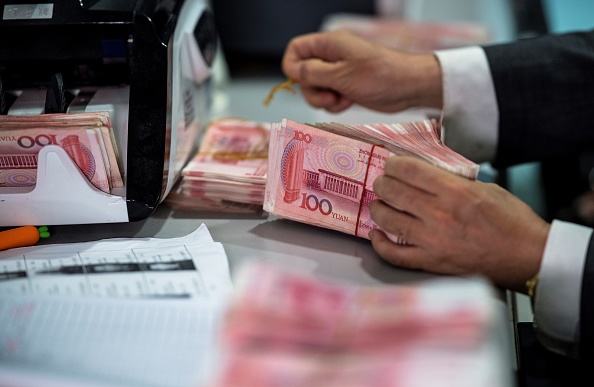Russia faced sanctions from Western countries due to its invasion of Ukraine and was prohibited from using the SWIFT system. Russia turned to embrace the Chinese yuan, but the peak of its reliance on the yuan has passed due to the constraints of the U.S. secondary sanctions.
Countries still doing business with Russia are facing increasing pressure from the United States, most notably through secondary sanctions. Such sanctions effectively restrained the further use of the yuan in Russia by suppressing bilateral trade and payments between China and Russia.
According to a report by Bloomberg on July 9th, Alex Isakov, a Russian economist at Bloomberg Economics, stated, “The threat of U.S. secondary sanctions is making banks nervous.”
He pointed out that the market indicates a shortage of yuan in Russia, and Chinese banks are also unwilling to provide liquidity.
On July 4th, Elvira Nabiullina, the governor of the Central Bank of Russia, also mentioned that payment issues are one of the main challenges facing the Russian economy. She disclosed during a press conference in St. Petersburg that the Central Bank of Russia is considering all potential risks, including the risk of suspension of yuan foreign exchange transactions.
Since Russia’s invasion of Ukraine, economic sanctions imposed by Europe and the U.S. on Russia include the prohibition of using the SWIFT banking system, leading Russia to deepen its reliance on the Chinese financial system as a settlement partner.
Data from Chinese customs shows that within two years, the trade volume between Russia and China has surpassed that with Germany, Australia, and Vietnam, with a more than 60% surge in trade volume in 2023, reaching $240 billion. China purchases Russian oil and other commodities at discounted prices, while Russia obtains a wide range of consumer goods and high-tech products.
Therefore, China has become Russia’s major trading partner, with the yuan accounting for about 40% of Russia’s export and import payments, and over half of Russia’s foreign exchange market turnover. Considering that Russia’s yuan adoption was nearly zero before Putin’s invasion of Ukraine in early 2022, the current scale is quite remarkable. Russia has also become the largest contributor to Beijing’s efforts to enhance the role of the yuan in international payments.
In December of last year, the U.S. Treasury Secretary, Janet Yellen, stated that the U.S. will not hesitate to take decisive and precise actions against financial institutions facilitating Russia’s war machinery. Subsequently, the overnight borrowing rate gap between Russia and China’s yuan widened significantly. Since the U.S. issued the warning, this gap has been maintained at several percentage points. In December of last year, the U.S. also approved secondary sanctions on overseas financial companies, leading Chinese state-owned banks to tighten financing restrictions on Russian clients.
According to data calculated by Bloomberg based on Chinese customs data, the annual growth rate of total Sino-Russian trade in the first five months of 2024 was only 3%, compared to nearly 42.5% a year ago. The Central Bank of Russia’s estimates show that the share of trade conducted in friendly currencies (rubles, yuan, and others) did not increase compared to the previous year.
“The adoption of the yuan by Russia may have reached its peak in 2023 for two reasons. First, the threat of secondary sanctions has had a strong deterrent effect on some of China’s largest institutions dealing with Russian counterparts. After Janet Yellen’s statement, the overnight yuan rate in Russia suddenly diverged from the Shanghai Interbank Offered Rate (Shibor), providing convincing evidence. Secondly, Russia’s use of the yuan is primarily driven by Russia’s oil exports, while other countries are still reluctant to accept the yuan as import payments. This means that if oil prices remain stagnant in the coming quarters, Russia’s yuan transactions will also stagnate,” said expert Isakov from Bloomberg Economics.
After the U.S. Treasury Department announced the secondary sanctions in December 2023, several Chinese state-owned banks have recently tightened financing restrictions on Russian companies.
In February 2024, China’s three largest banks – Industrial and Commercial Bank of China, China Construction Bank, and Bank of China – stopped accepting payments from sanctioned Russian financial institutions.
Russian business newspaper “Vedomosti” reported that in February, the Zhejiang Chouzhou Commercial Bank, a major Chinese bank used by Russian importers, also ceased operations in Russia.
According to “Kommersant,” citing industry sources in the financial sector, in June, the China Bank’s Russian branch, which focuses on yuan payments, suspended transactions with Russian banks that were sanctioned due to the conflict in Ukraine.
The latest round of restrictions imposed by the U.S. in June disrupted foreign exchange transactions in U.S. dollars and euros for Russia. The yuan has become the only currency available for trading and purchases in Russian brokerage accounts.
However, economist Sofya Donets from T-Investments noted, “There is still potential for growth in the use of the yuan, but the growth rate is small and cannot be compared to what has already happened.”
“Most of the journey has already been completed,” she said.

